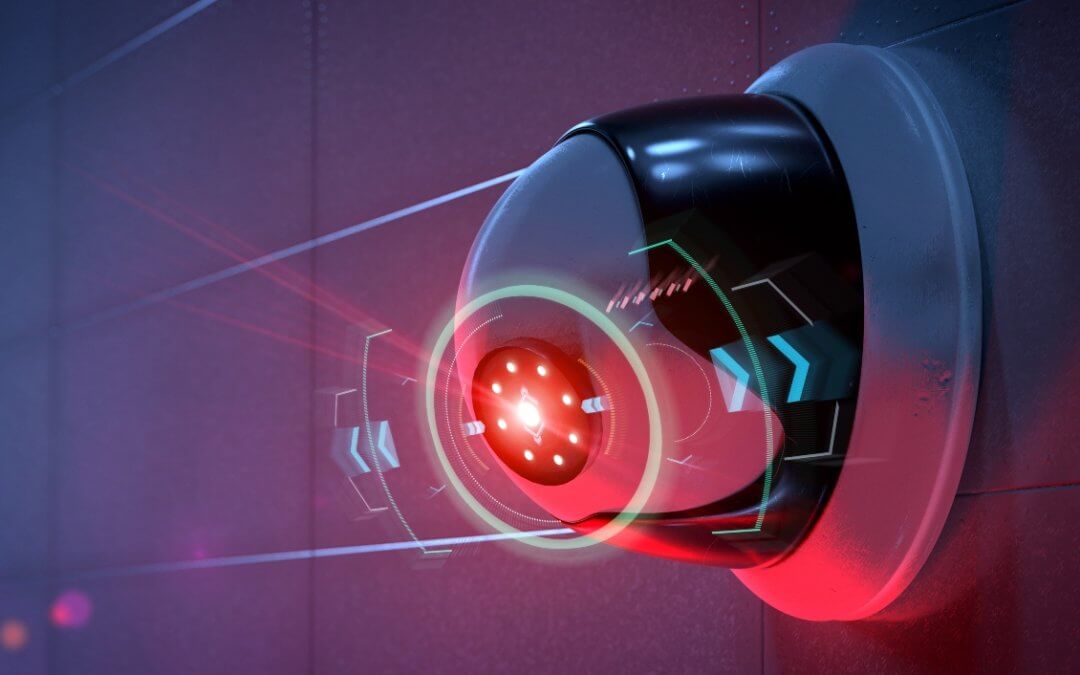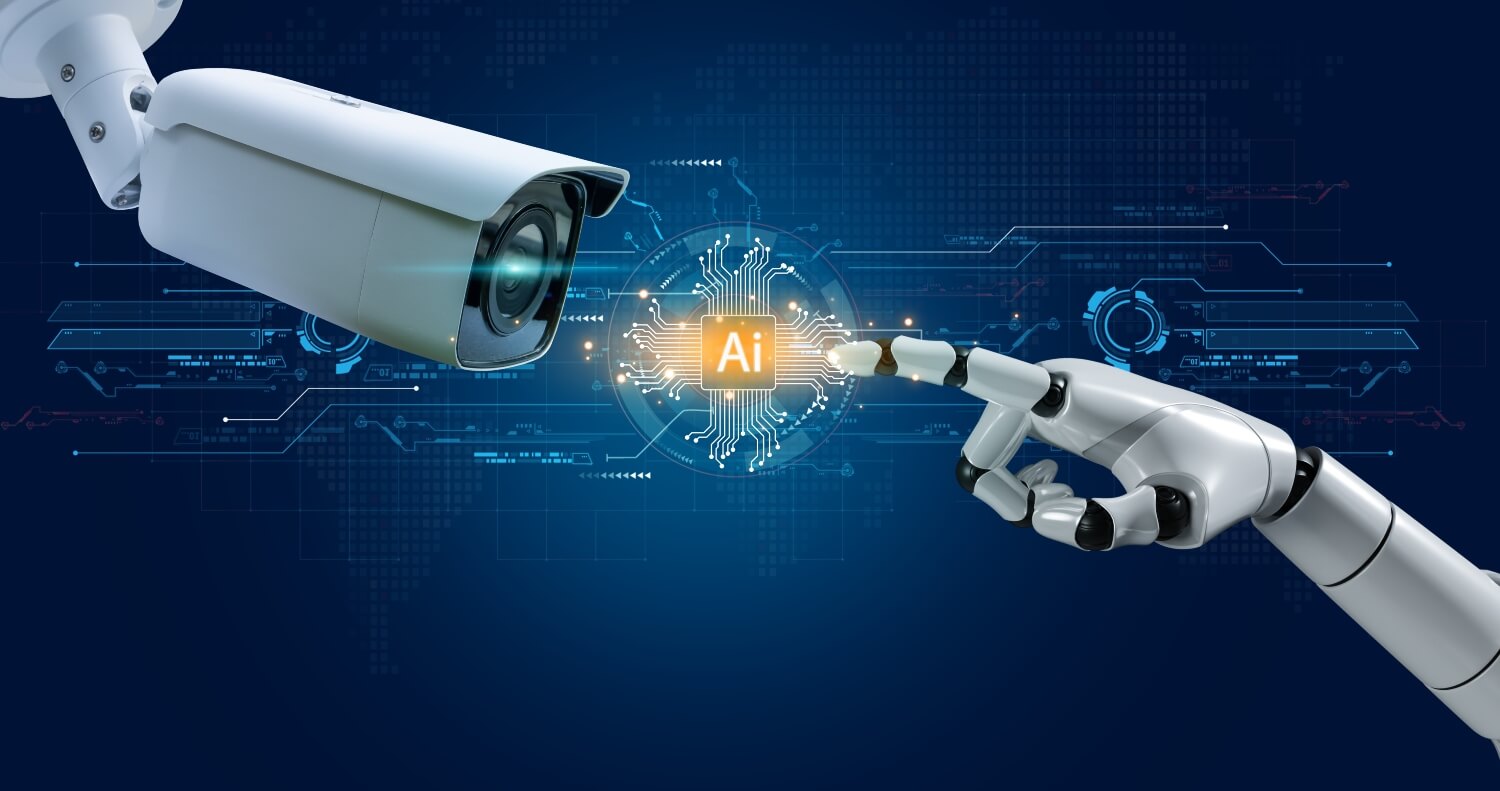They combine advanced technology with human oversight to detect threats early, reduce false alarms, and coordinate rapid, effective responses. These systems bridge the gap between automated detection and real-world intervention, providing peace of mind while safeguarding people, property, and operations. Pioneer Security specializes in providing these cutting-edge solutions, ensuring high-risk sites are protected around the clock.
Recognizing High-Risk Environments
High-risk environments demand a security strategy that matches their unique challenges. Understanding what qualifies as a high-risk site is the first step in implementing adequate protection.
Understanding What Makes a Site High-Risk
High-risk environments are defined by their combination of valuable assets, operational sensitivity, and potential exposure to threats. These sites require security systems that do more than just alert; they need to provide actionable intelligence. Industrial sites, data centers, construction zones, healthcare facilities, and remote utility plants are prime examples.
In federal risk programs, systems supporting such operations are often labeled High Value Assets (HVAs), a designation used by NIST and CISA for information systems requiring elevated protection due to mission or informational criticality.
High-risk sites are vulnerable to theft, vandalism, sabotage, and operational interruptions that can result in financial and reputational damage. The complexity of these risks calls for alarm systems that integrate multiple layers of detection, video verification, and real-time monitoring for complete coverage.
Why Standard Systems Fall Short
Traditional alarm systems rely on fundamental triggers such as motion sensors or door contacts, which may not be sufficient for high-risk environments. False alarms, slow response times, and a lack of integration with emergency services can leave these sites exposed.
Reflecting this, law‑enforcement organizations endorse Enhanced Call Verification to reduce false dispatches before officers are sent, a practice now embedded in many model ordinances.
Alarm verification systems for high-risk environments need to detect threats proactively, validate incidents through live monitoring, and alert both on-site personnel and authorities. This level of intelligence ensures that potential risks are mitigated before they escalate.
Calculating What You’re Up Against
To effectively secure high-risk environments, it is critical to understand the types of threats these sites face and the potential consequences of security breaches.
Common Threats for High-Risk Sites
High-risk sites face a variety of threats. Some of the most common include:
- Theft of Equipment or Materials: Expensive machinery, building materials, and critical equipment can be prime targets for criminals.
- Vandalism or Sabotage: Deliberate acts that disrupt operations or damage property can occur in construction zones, industrial sites, and remote facilities.
- Regulatory Violations: Non-compliance with safety or operational regulations can result in fines, penalties, and legal action.
- Operational Disruptions: Downtime due to breaches can cause delays, lost revenue, and safety hazards.
For perspective, Uptime Institute reports that 54% of organizations’ most recent severe outages cost over $100,000, and 16% exceeded $1 million; likewise, the National Equipment Register documented $9.6 million in heavy‑equipment theft losses during just the 2023 Memorial Day week, illustrating the financial stakes for high‑risk sites.
Understanding these threats allows organizations to select alarm systems capable of monitoring, detecting, and responding appropriately.
Assessing the Impact of Security Breaches
The consequences of security breaches extend far beyond the immediate loss of property. High-risk sites may experience:
- Financial Losses: Theft, property damage, and operational interruptions can carry significant costs.
- Operational Downtime: Disruptions to normal operations can have cascading effects on production, service delivery, or project timelines.
- Reputational Damage: Public knowledge of security incidents can harm client trust and brand credibility.
- Legal and Regulatory Liabilities: Violations due to inadequate security measures can lead to fines, penalties, or lawsuits.
A well-designed alarm/verification program is also associated with measurable public-safety gains; a peer-reviewed analysis of “verified response” policies found significant reductions in police alarm dispatches and related crime.
Why are high-risk sites more vulnerable than standard facilities?
They often contain valuable assets, sensitive operations, and face regulatory scrutiny, making them attractive targets and requiring advanced security measures.
Layered Detection with AI and Smart Sensors
High-risk environments benefit from alarm systems that combine multiple detection layers with AI for more intelligent monitoring.
Backed by research: surveys and methods in the peer-reviewed surveillance literature show deep-learning-based anomaly detection can improve event detection while explicitly controlling or reducing false-alarm rates, helping operators focus on genuine threats.
How Sensors and AI Work Together
Modern alarm systems use a combination of sensors, including motion detectors, door and window contacts, environmental sensors, and perimeter intrusion systems. AI analyzes data from these devices to distinguish between real threats and minor disturbances.
In perimeter protection specifically, studies in Sensors describe combining smart detectors, networks, and control software to extend detection range and reduce nuisance alarms, a core benefit for high‑risk sites.
This integration ensures that small, irrelevant triggers, such as animals or environmental factors, do not generate false alarms, allowing operators to focus on genuine threats.
Reducing False Alarms and Improving Accuracy
False alarms can desensitize staff and waste valuable resources. By using AI and behavioral analytics, alarm systems learn standard activity patterns and highlight anomalies, improving reliability and efficiency.
Recent peer‑reviewed work on abnormal‑event detection shows that retraining/behavioral modeling pipelines can reduce false alarms and improve the overall reliability of surveillance alerts.
This capability enhances trust in the system and ensures that security personnel can respond appropriately when genuine incidents occur.
How do AI sensors improve alarm system reliability?
AI sensors analyze activity patterns, distinguish real threats from benign events, and reduce false alarms, ensuring faster, more accurate responses.
Fast, Flexible Deployment for Dynamic Sites
High-risk sites often change frequently or require temporary protection. Alarm systems must be adaptable and easily deployed. Wireless/IoT sensor networks are specifically cited in the technical literature as suited to rapid deployment and scalable coverage in industrial and construction environments (e.g., LoRa‑based site monitoring).
Modular Alarm System Installations
Modular alarm systems provide rapid deployment and flexible coverage. Key benefits include:
- Wireless Sensors: Easy to install without permanent infrastructure.
- Portable Monitoring Units: Can be relocated as site needs change.
- Flexible Configurations: Systems can be scaled up or down depending on site size and risk profile.
Case studies of construction‑site sensing show autonomous wireless deployments supporting safety and access monitoring without heavy infrastructure, exactly the kind of modularity these environments demand.
This approach ensures consistent protection, even in temporary or evolving environments.
Adapting to Changing Environments
Alarm systems for high-risk sites must adjust to fluctuations in occupancy, operational layouts, or environmental conditions. Remote management tools allow operators to:
- Reconfigure sensor coverage
- Adjust alarm sensitivity
- Add or remove components
- Optimize response protocols
This flexibility guarantees that security measures remain effective despite changes at the site.
Can alarm systems be adapted for temporary or changing sites?
Yes, modern systems use modular components and remote management tools for quick installation, relocation, and adjustments.
Live Video and Human Verification for Real-Time Response
Combining AI detection with human verification ensures that alarms are evaluated accurately and responded to efficiently. In fact, Peer‑reviewed evaluation of “verified response” policies found an 87% annual reduction in police alarm‑response calls and a 26% reduction in burglaries in one U.S. city case study, evidence that human confirmation paired with technology materially improves outcomes.
Combining Technology with Human Oversight
When an alarm is triggered, live video feeds allow trained operators to assess the situation on-site immediately. This real-time monitoring ensures that alerts are not blindly acted upon, preventing unnecessary deployments and reducing operational disruptions.
For example, if a sensor detects movement in a restricted area, AI might flag it as a potential threat. A human operator reviewing the live video can determine whether it’s a maintenance worker performing routine tasks, a harmless environmental event like a gust of wind, or an actual intruder attempting unauthorized access. By adding human judgment, security teams can reduce false alarms while ensuring that genuine threats are addressed promptly.
This human‑in‑the‑loop model reflects best practice in the policing literature and helps conserve scarce public‑safety resources.
Human verification complements AI by providing nuanced assessments that technology alone cannot achieve. AI systems are excellent at analyzing patterns and detecting anomalies, but they lack the situational awareness, reasoning, and intuition that trained security professionals bring to the table. This collaboration ensures that every alert is interpreted correctly and responded to effectively.
Reducing Response Time and Escalation Risks
Rapid verification through human oversight accelerates response times. When operators can immediately confirm a threat, they can initiate appropriate security measures without delay. This is particularly critical for high-risk environments, such as industrial sites, data centers, or healthcare facilities, where even minor delays can lead to significant consequences.
By combining AI detection with human verification, security teams can prioritize incidents accurately, deploy personnel effectively, and coordinate with emergency services when needed. This proactive approach minimizes potential damage, prevents escalation, and reduces operational downtime.
For instance, in a remote storage facility, live human verification can immediately confirm whether an alert indicates attempted theft or a false trigger, enabling a precise and measured response. Over time, this process also allows security teams to refine protocols, optimize alarm sensitivity, and improve overall operational efficiency.
Why is human verification necessary in alarm systems?
Human verification ensures alarms are evaluated in context, reducing false alarms and enabling fast, effective responses to actual threats.
Confirming Events with Audio-Visual Verification
Audio-visual verification provides high-risk alarm systems with an additional layer of clarity and situational awareness, making it easier for operators to distinguish between minor incidents and genuine threats. This verification process ensures that alarms are not just alerts on a screen, they become actionable intelligence, allowing security teams to respond appropriately and confidently.
In field tests combining audio localization/classification with video detection, researchers reported a 60% decrease in false positives versus video alone, evidence that multimodal verification sharpens accuracy.
Real-Time Audio and Video Assessment
When a sensor is triggered, audio and video feeds are immediately transmitted to a monitoring station. Operators can see exactly what is happening on-site and hear relevant sounds, such as forced entry attempts or unusual activity, which provides critical context that raw sensor data alone cannot offer.
Academic work on audio‑visual fusion similarly shows lower error rates for verification tasks when modalities are combined, reinforcing the value of hearing plus seeing in alarm adjudication.
For example, suppose a motion detector is activated outside a remote warehouse. In that case, a live video feed can confirm whether it’s a stray animal, a construction worker moving equipment, or an actual intruder. Audio capabilities allow operators to listen for glass breaking, alarms sounding, or other indicators of a threat. This combination ensures that the response is accurate, measured, and effective.
At the same time, investigative reporting has documented misfires from standalone “aggression‑detection” audio tools in schools, another reason to keep human verification in the loop rather than relying on automation alone.
By providing this real-time information, audio-visual verification reduces the risk of unnecessary alarm responses while prioritizing genuine security threats. Security personnel can decide immediately whether to dispatch on-site staff, notify local authorities, or initiate automated security protocols, all with confidence.
Enhancing Decision-Making
The integration of audio and visual information enhances decision-making on multiple levels. Operators can quickly assess the severity of an incident, determine the exact location of the threat, and identify potential risks to people or property. This ensures that response actions are appropriate and resources are deployed efficiently.
On the other hand, Multimodal datasets and methods developed by the computer‑vision community continue to push verification performance forward, offering richer context for security decision‑making.
For high-risk environments, such as industrial sites, data centers, or healthcare facilities, this capability is invaluable. It enables security teams to respond more quickly, mitigate potential damage, and prevent minor incidents from escalating into costly or dangerous situations.
Audio-visual verification also contributes to long-term security improvements. Recorded footage can be reviewed to refine security procedures, adjust alarm sensitivity, and train personnel on threat recognition. Over time, this leads to more brilliant, more proactive security management that continuously adapts to the unique needs of a high-risk site.
Unified Security: Alarms, Cameras, Access Control, PSIM
Integrating multiple security systems enhances situational awareness and improves coordinated responses.
Benefits of Integrated Security Systems
Integrated systems offer several advantages for high-risk sites:
- Centralized Monitoring: All devices and alerts are managed from a single interface.
- Coordinated Response: Automatic workflows allow cameras, alarms, and locks to work together.
- Enhanced Situational Awareness: Operators gain a complete view of the environment for better decision-making.
This integration strengthens overall site security and streamlines operations. Even Scholarly and industry sources concur that such integration reduces operator load and improves incident handling through standardized data exchange.
What is PSIM, and how does it benefit high-risk facilities?
PSIM integrates multiple security systems into one platform, improving monitoring, coordination, and response efficiency.
Seamless Emergency Dispatch Integration
In any environment where the stakes are high, the ability to communicate instantly with emergency services can make all the difference. When a critical incident unfolds, there’s simply no time to waste. The speed and accuracy of your response can determine whether a situation is quickly contained or allowed to escalate. That’s why integrating your surveillance control room with emergency dispatch services is an absolute game-changer for overall safety and peace of mind.
Advantages of Direct Dispatch Integration
Alarm systems linked to emergency responders provide key benefits:
- Faster Response Times: When an alert is verified through live surveillance and system checks, it’s sent straight to the appropriate emergency team. This direct line bypasses unnecessary steps and ensures that first responders are mobilized the moment a genuine threat is detected. In high-stakes moments, every second counts, and this integration shaves precious time off the response window. Standards bodies such as NENA and ANSI confirm this, NG9-1-1 specifications like the Emergency Incident Data Object (EIDO) and the TMA-AVS-01 Alarm Validation Scoring standard now define how verified alarm data can flow directly to dispatchers, cutting down response times and improving efficiency.
Accurate Incident Handling: Because only validated and confirmed incidents trigger an emergency dispatch, the system dramatically reduces the number of false alarms. Operators in the control room verify the situation through real-time video, access logs, and on-the-ground reports before contacting emergency services. This means that when police, fire, or medical teams arrive, they know they’re responding to a real event, not a false trigger.
Improved Safety for Personnel and Assets: By combining advanced verification with direct communication, organizations ensure that their people and property are protected with as little delay as possible. Whether it’s a fire, intrusion, or medical emergency, immediate response not only limits damage but also helps keep everyone on site safer.
This ensures that emergencies are addressed promptly, reducing potential harm.
How does emergency dispatch integration improve safety?
Verified alarms are sent directly to EMS, fire, or law enforcement, enabling faster, accurate responses to incidents.
Ensure Maximum Protection for Your High-Risk Site Today
High-risk environments demand security solutions that are reliable, responsive, and tailored to your unique challenges. Alarm systems are a critical part of this strategy, offering early detection, intelligent verification, and seamless coordination with emergency services.
At Pioneer Security, we provide advanced alarm systems specifically designed for high-risk sites. By combining AI-powered motion detection with live human verification and offering rapid deployment options for both permanent and temporary locations, we ensure your assets, personnel, and operations are fully protected.
Contact Pioneer Security today to schedule a consultation and discover how our expert solutions can deliver peace of mind, operational continuity, and unparalleled protection.
Frequently Asked Questions
What is the primary benefit of alarm systems for high-risk environments?
They detect threats early, reduce false alarms, and coordinate rapid, effective responses, safeguarding assets, operations, and personnel.
How do alarm systems integrate with other security measures?
Modern systems work with cameras, access control, and PSIM platforms to provide a unified, efficient monitoring and response system.
Can high-risk alarm systems adapt to changing conditions?
Yes, modular and remotely managed systems allow adjustments to coverage, sensor placement, and response protocols as site conditions change.
How do AI and human verification complement each other?
AI filters alerts and identifies patterns, while human operators validate incidents in real time, ensuring accuracy and timely responses.
Are Pioneer Security alarm systems suitable for temporary sites?
Absolutely. Pioneer offers modular systems and rapid deployment options to protect temporary or dynamic high-risk sites efficiently.






